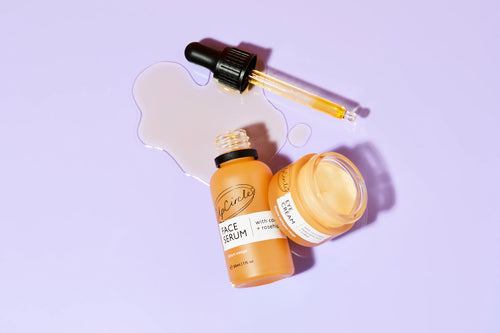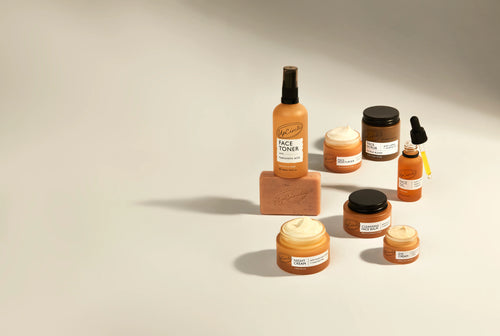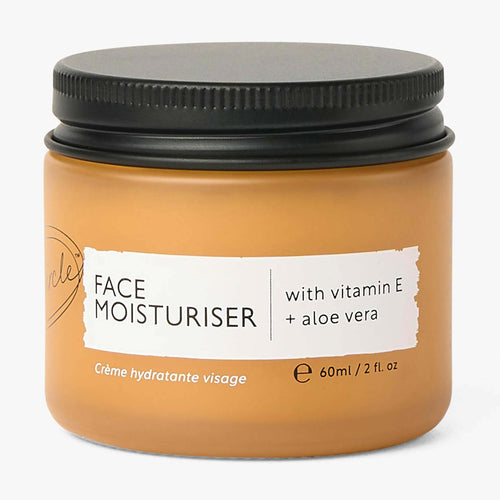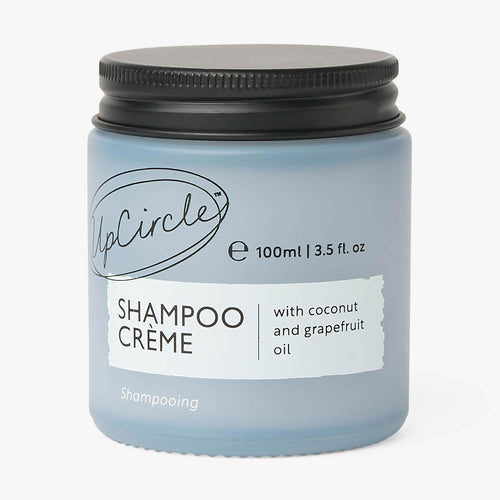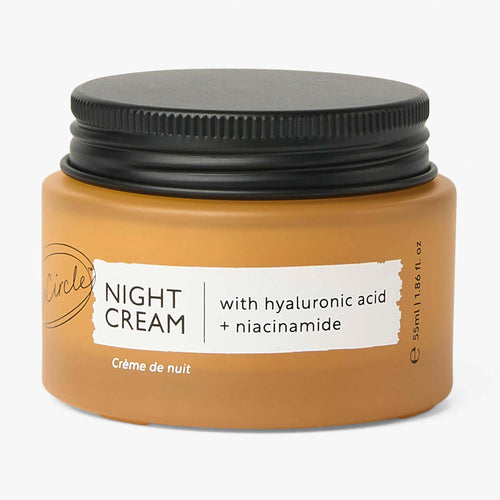AHAs are the latest buzzword of the skincare world, with many people swearing by their benefits. Hailed for improving skin tone through exfoliation and brightening the skin’s complexion, AHAs are being used more frequently in skincare products.
We’ll keep the technical science talk to a minimum as we explain what you need to know about AHAs, AHA skin care and the benefits of AHAs.
AHA skin care: FAQs
We get it – all these skincare terms and ingredients can be difficult to keep up with. That’s why we’ve brought together all of our most frequently asked questions about AHAs in skin care and how to use them.
What are AHAs?
Alpha Hydroxy Acids (AHAs) are organic acids which are typically used as chemical exfoliants, removing dead skin cells to reveal newer, brighter skin. The US Food and Drug Association (FDA) notes that ‘AHA-containing products cause exfoliation, or shedding of the surface skin’, with the extent of exfoliation being dependent on the type of AHA, concentration, pH and other ingredients in the product.
The main types of AHA are glycolic acid, lactic acid, malic acid and citric acid, which are all often used extensively in cosmetics and skincare.
- Glycolic acid – consisting of the smallest molecules of all the AHAs, glycolic acid is highly soluble in water and has an excellent capacity for penetrating the skin.
- Lactic acid – known to have moisturising, antimicrobial and rejuvenating effects on the skin, lactic acid is frequently used in the cosmetics industry.
- Malic acid and citric acid – both found naturally in fruits, malic acid and citric acid help to exfoliate the skin.
What is AHA skincare?
AHA skincare includes products containing AHAs, specifically formulated to reap the benefits of AHAs included. While AHAs are organic, AHAs used in skincare are often synthetically produced. This isn’t the case for all products, as some source their AHAs from sour milk (lactic acid), fruits (citric acid and malic acid) or sugarcane (glycolic acid).
As you’ll probably know by now, sustainability and upcycling are at the heart of what we do at UpCircle. That’s why all of the products at UpCircle containing AHAs are all 100% vegan and cruelty free. Discover the UpCircle products containing AHAs:
- Our Hydrating Face Toner uses AHA citric acid alongside plumping hyaluronic acid and biologically active mandarin fruit water to protect against inflammation. Helping to unclog pores and even skin tone, our citric acid-rich toner is a fan-favourite.
- Similar to in our face toner, we also use citric acid in our Plastic Negative Eye Cream to help balance the skin tone and reduce fine lines. The nourishing eye cream is also rich in coffee oil, upcycled maple bark extract and hyaluronic acid.
- Did you know our Hand Cream also contains 0.1-1.00% AHAs from upcycled hibiscus flower acids? These natural AHAs help gently eliminate pollutants from the upper layers of the skin and stimulate cell renewal.
Should you use AHAs on wet or dry skin?
AHAs should typically be used on dry skin as they are a type of chemical exfoliant. However, as many skincare products contain AHAs – from cleansers and toners to eye creams and dedicated serums – you should follow the directions stated on each individual product.
Are AHAs bad for skin?
Like with many products, overusing AHAs can be bad for the skin and cause damage. A study on the effects of AHAs on the skin found that ‘AHAs used as peeling agents at high concentrations will disrupt cohesion of the corneocytes of the skin barrier and result in skin irritation, which is harmful to the skin’.
We aren’t all scientists, so what this really means is that if you use AHAs on your skin too often, you risk damaging your skin barrier and causing unnecessary irritation. In moderation at low concentrations, AHAs can bring many benefits for the skin, which we will cover below.
A word of warning, while AHAs can improve the visible signs of sun damage, it can make your skin more vulnerable to UV rays. It’s always essential to wear a high-quality mineral SPF, but especially when you are using AHAs in your skincare routine.
What is an AHA skin purge?
Skin purging relates to a sped up version of your skin’s usual cell turnover process, in response to active ingredients such as AHAs. If you want to delve deeper into the difference between skin purging and skin breakouts, you’re in luck! You can read more about this in our blog post.
What does AHA do for your skin? 5 AHA skin benefits
There are many AHA skin care benefits that you can reap from using AHA-rich skincare products, including:
1. Skin exfoliation
Likely one of the most well-known benefits of AHA in skincare is exfoliation, with AHAs frequently being used in chemical peels.
As AHAs are water-soluble, they can penetrate the upper layers of the skin. By breaking down the bonds between dead skin cells, AHAs slough off these cells, revealing newer skin underneath.
2. Brighten the skin
AHAs also increase cell turnover by helping to increase the rate at which new cells are produced. As older dead skin cells are sloughed off, newer and healthier skin cells are revealed underneath. These newer skin cells beneath help to brighten the skin and lead to a more youthful complexion.
3. Combat dryness
It may come as a shock, but AHAs are actually helpful when it comes to combatting dry skin. One of the most commonly used AHAs in skincare, lactic acid – as sodium lactate – is a ‘well-known part of the skin’s natural moisturising complex’, and considered to be an excellent moisturiser.
Moisturised skin is happy skin that appears brighter, healthier and clearer. AHAs help to prevent dry skin and various skin conditions associated with chronically dry skin.
4. Even the skin tone
As AHAs are organic acids used as chemical exfoliants, they can help to even out the skin. By removing the outermost layer of dead and damaged skin cells, cell turnover is increased.
The layer of dead skin cells which is sloughed off by AHA-based products could be uneven, marked or damaged. By revealing newer and healthier skin underneath, a more even complexion can be achieved.
5. Minimise visible sun damage
AHAs can work to reduce the appearance of some visible signs of sun damage such as hyperpigmentation and darker spots. Discoloured and damaged skin cells can be removed by using AHAs, minimising the visible signs of sun damage.
Shop our full range of vegan and cruelty free skincare at UpCircle.

